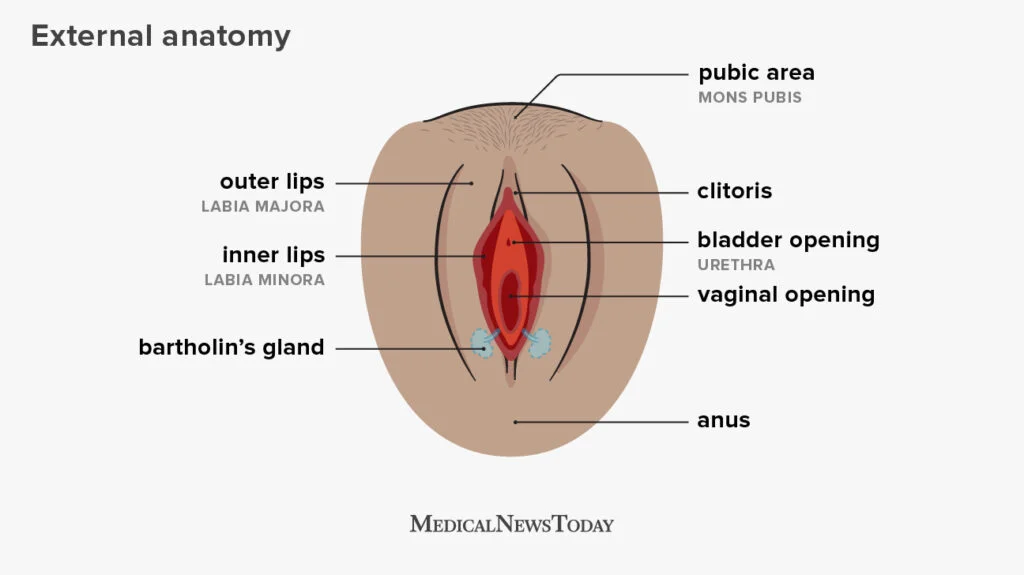The labia minora, often referred to as the inner lips, are an essential component of female external genitalia. Located within the labia majora, these delicate, skin-like folds play a vital role in both physical protection and sexual function. Understanding the anatomy, variations, and potential health concerns related to the labia minora helps promote better awareness and body positivity.
Anatomy and Structure of the Labia Minora
The labia minora are two thin, elongated folds of skin situated on either side of the vaginal opening, lying within the larger and fleshier labia majora. Unlike the labia majora, the labia minora do not contain hair follicles. Their composition includes connective tissue, blood vessels, and nerve endings, contributing significantly to sexual sensitivity and arousal.
Each woman’s labia minora is unique in shape, size, and color, with variations ranging from symmetrical to asymmetrical. The skin can range from light pink to dark brown and may be either smooth or wrinkled.
Main Structural Features:
Length: Can range from a few millimeters to several centimeters.
Texture: Soft and elastic, allowing for expansion and movement.
Position: May be concealed within the labia majora or extend beyond them.
Functions of the Labia Minora
The labia minora serve multiple essential functions, both protective and sensory in nature:
1. Protection of Vaginal and Urethral Openings
The labia minora shield the vaginal and urethral openings from pathogens, friction, and debris, acting as a barrier against infections.
2. Sexual Sensitivity and Arousal
Rich in nerve endings, the labia minora are highly responsive to touch, playing a crucial role in sexual stimulation and pleasure.
3. Moisture Retention and Lubrication
They assist in maintaining the moisture balance of the vulvar area by trapping natural secretions and helping spread vaginal lubrication during sexual arousal.
Natural Variations in Labia Minora
There is no “normal” appearance for the labia minora. Their size, shape, and color vary significantly among individuals, and such differences are entirely natural. These variations are influenced by genetics, age, hormones, and childbirth.
Common Labial Variations Include:
Asymmetry: One side may be longer or shaped differently than the other.
Protrusion: Labia minora may extend beyond the labia majora.
Pigmentation: Ranges from pink to dark brown, often with darker inner edges.
Texture and Shape: Can be flat, wavy, or ridged.
These differences have no impact on health or function and are purely aesthetic. Unfortunately, social beauty standards have led some women to feel self-conscious about their labia, resulting in increased interest in labiaplasty.
Common Concerns and Labia Minora Health Issues
The labia minora, like all parts of the body, can experience discomfort, irritation, and medical issues. Awareness and early care can prevent complications.
1. Labial Irritation
Irritation can result from tight clothing, friction, excessive washing, scented products, or infections. Symptoms include redness, itching, and burning.
2. Infections
Yeast infections, bacterial vaginosis, and sexually transmitted infections (STIs) can affect the vulvar area, including the labia minora, causing discomfort, swelling, and unusual discharge.
3. Cysts or Lumps
Sebaceous cysts or Bartholin’s cysts can form near or on the labia minora. While most are benign, persistent swelling or pain should be evaluated by a healthcare provider.
4. Inflammation and Vulvitis
Vulvitis refers to inflammation of the external genital area, often involving the labia minora. Causes include allergies, infections, hormonal changes, or dermatologic conditions.
5. Labial Hypertrophy
This refers to enlarged labia minora, which may be natural or due to hormonal changes, childbirth, or genetics. While typically harmless, some may experience discomfort or chafing.
Labia Minora and Labiaplasty: What to Know
Labiaplasty is a surgical procedure that alters the size or shape of the labia minora. While it is increasingly popular, especially due to aesthetic concerns, it’s important to recognize that most variations are entirely normal.
Reasons for Considering Labiaplasty:
Physical discomfort during physical activities or sex
Persistent hygiene difficulties
Aesthetic or self-esteem concerns
Before undergoing labiaplasty, one should consult a qualified gynecologist or plastic surgeon to understand the risks, recovery time, and expected outcomes.
Tips for Maintaining Labia Minora Health
Keeping the labia minora clean and healthy is essential for overall vaginal health.
1. Gentle Hygiene Practices
Use unscented, pH-balanced cleansers or simply warm water. Avoid douching and harsh soaps that can disrupt natural flora.
2. Wear Breathable Clothing
Choose cotton underwear and loose-fitting clothes to reduce moisture build-up and friction.
3. Stay Hydrated and Eat Well
A balanced diet rich in vitamins A, E, and C supports skin health and elasticity.
4. Practice Safe Sex
Use protection during sexual activity and get regular STI screenings.
5. Seek Medical Advice for Discomfort
Do not self-diagnose issues such as lumps, pain, or discharge. A gynecologist can provide accurate evaluation and treatment.
Promoting Body Positivity and Labial Diversity
We must recognize and respect the natural diversity of the human body. The rise in social media and unrealistic beauty standards can create pressure to conform to a narrow ideal of genital appearance. Education and awareness about the wide range of normal anatomy help in building self-confidence and reducing the stigma surrounding this topic.
Empowering individuals to embrace their unique bodies contributes to improved mental health, sexual wellness, and body acceptance.
Conclusion
The labia minora are more than just anatomical features—they are vital components of female sexual and reproductive health. By understanding their function, recognizing normal variations, and practicing good hygiene, we can support both physical comfort and body confidence. Medical consultation should be prioritized for any persistent discomfort, and decisions about cosmetic procedures should always be well-informed and personal.



















